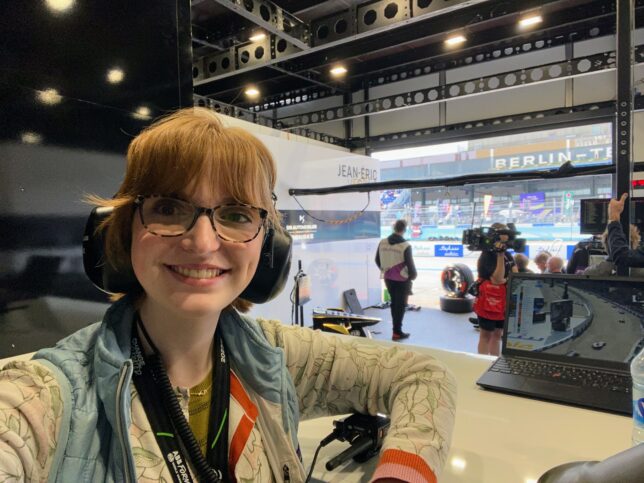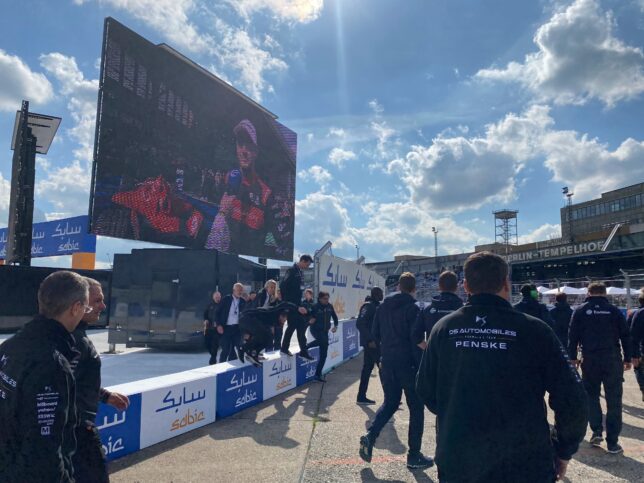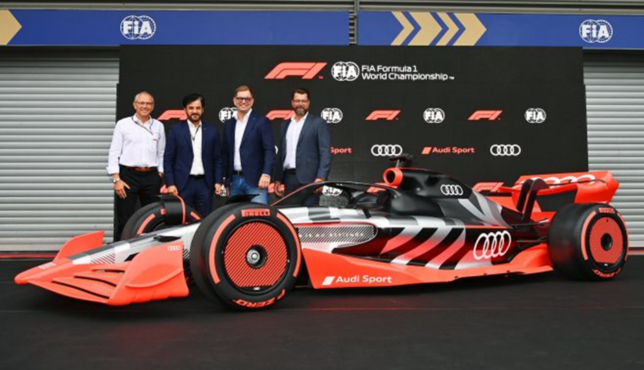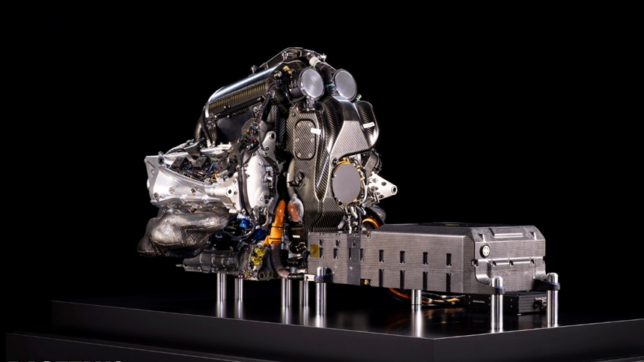Sophie Clare details her experience attending the second Berlin E-Prix race and Formula E’s Season 9 Rookie testing.
The second round of the SABIC 2023 Berlin E-Prix began with a rainy morning, quite the contrast to the sunshine on Saturday. After arriving on-site at Tempelhof, I sheltered from the weather in the media centre to watch qualifying (although we ventured into the rain to watch parts of the Duels!). Qualifying saw an amazing front-row lockout for the ABT CUPRA team, with Robin Frijns and Nico Müller putting in two stand-out performances despite wet and variable track conditions, as drier lines appeared during the course of the session. The ABT CUPRA team’s excellent result in the very first wet session of the GEN3 era was also voted as Formula E fans’ Moment of Berlin and marked the team’s first points of the season.

Qualifying saw an amazing front-row lockout for the ABT CUPRA team, with Robin Frijns and Nico Müller putting in two stand-out performances despite wet and variable track conditions.
After qualifying we enjoyed some time in the pit lane, where the rain certainly wasn’t dampening anyone’s spirits… The Jaguar TCS garage had a fantastic playlist featuring Umbrella by Rihanna! I was pleased to have a tour around the garage from Emily Hogg, who discussed her role as Senior PR and Communications Officer and showed us the behind-the-scenes of the team’s setup. Emily explained about the different responsibilities within a communications role, in particular how these vary between race weekends and the more typical work-week in the office. When behind a desk, her role focuses on developing communications strategies for upcoming race weekends, such as planning engagement with regional markets. During the weekend, the strategies and plans are put into effect with the production of social media content, writing of press releases, hosting VIPs and influencers and often collaborating with local Jaguar teams with a presence in each race location. Each race provides unique opportunities, for example the Monaco E-Prix is a valuable chance to connect with publications in the lifestyle, fashion, travel and luxury consumer spaces; bringing Formula E and its teams and drivers to new audiences beyond the motorsport world.
The Abt Cupra drivers had been hoping for a wet race to continue their excellent performance from quali, but the weather nonetheless started to warm up and dry out. We therefore watched the race start from our trusty trackside vantage point, with a sunny atmosphere that mirrored the previous race. The racing action was not quite as chaotic as on Saturday, although there was still a whopping number of overtakes and tense moments. After a few laps we were quickly rushing through the paddock to watch the majority of the race from the DS PENSKE team garage! Nathalie Dumas, Communications Manager from DS Performance was kind enough to invite us. It was amazing to observe the action from the garage alongside Femme Speed’s Gracie Talia Ross, and Lena Ferle from Formula Nerds. With our headsets tuned into the team radio, I especially enjoyed hearing some of Jean-Eric Vergne’s messages to the team in French: helping ensure the weekend counts towards my Year Abroad language immersion! It was a wonderful insight into how the trackside team members experience each race.

Excitingly, Jean-Eric Vergne secured a third place podium and maintained his third place position in the drivers’ championship – reducing his gap to the leader Pascal Wehrlein. Stoffel Vandoorne also scored valuable points for the DS PENSKE team, which maintained its fourth place in the teams’ championship. As the cars returned to the pit lane and the podium finishers parked in the Allianz Fan Village, we followed the DS PENSKE team members across the track and enjoyed the celebratory atmosphere of the podium! It truly was an exhilarating experience and a highlight from another historic Formula E weekend. Following the podium celebrations, it was once again time for the press conference and media pens. As well as familiar faces from the Formula E grid, there was also the opportunity for the media to speak with drivers taking part in the Season 9 Rookie test the following day. I had the chance to talk with Jack Aitken about the Rookie test and his thoughts on Formula E – read more here!

The rookie test quickly rolled around on Monday which had a very different, peaceful atmosphere once the site was empty of spectators. Staff were starting to unpack the track, and the pit lane and paddock was a lot quieter. This was a great opportunity to explore the grid away from the hectic atmosphere of the main race weekend, especially because events like Rookie testing place an emphasis on practice, experience and data collection rather than competition. I enjoyed meeting Viktoria Wohlrapp, who is Motorsport Communications Spokesperson for Porsche and gave me a tour of their team garage. It was interesting to observe as Yifei Yi prepared for the practice session, particularly watching all the small details that go into getting the car and driver out on track.
The rookie test quickly rolled around on Monday which had a very different, peaceful atmosphere…
Viktoria also took me over to the Avalanche Andretti garage, where it was lovely to meet their Formula E and Extreme E Communications Manager Lewis Mitchell. I watched the rest of the testing session from the Andretti garage and it was nice to hear the Communications staff – albeit working for competing teams – discussing their plans for the upcoming Monaco E-Prix and working together towards shared goals. This is something which consistently strikes me about the Formula E paddock is the wonderful feeling of community. Even though the teams are competing for the Championship, there is a great sense of camaraderie and collaboration across all aspects of the sport; from media to engineers, drivers to race officials. Everyone involved dedicates hard graft to produce high quality sport and entertainment, as evidenced by the cumulative growth of fan engagement and a whopping 20% year-on-year increase to a cumulative audience of 381 million during last year’s Season 8. Overall, Formula 2 champion Felipe Drugovich scored the fastest lap time of the rookie test, setting a fastest time just two tenths of a second off the best time set in practice by Maximilian Guenther during the main race weekend – in the same Maserati MSG Racing car.
Something which consistently strikes me about the Formula E paddock is the wonderful feeling of community.
To conclude the race weekend it was time for a final wander through the pit lane with Abi Jackson and Soph Upton, some of a lovely and talented group of motorsport influencers who I met during the race weekend as well as Ashley Eleanor, Monique Adriana and Antonia Rankin. It was great to learn more about working as an influencer and how each of them are achieving exciting milestones: they were also taking part in the launch of Formula E’s new simulator racing series Accelerate Amped, which will continue at the oncoming E-Prix rounds in Rome and London.
Ultimately, being back in the Formula E paddock was a highlight of my time here in Berlin. It was a wonderful opportunity to get up close to the racing action, which I won’t forget any time soon.


